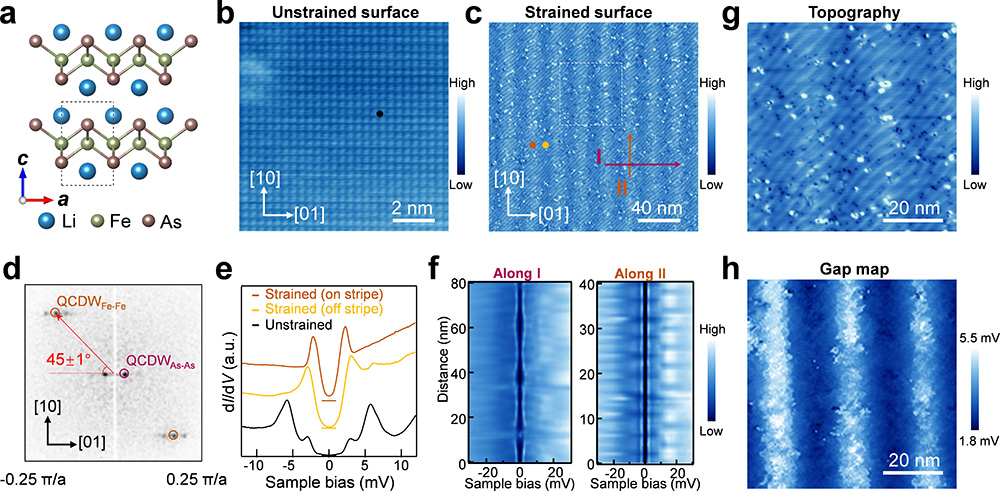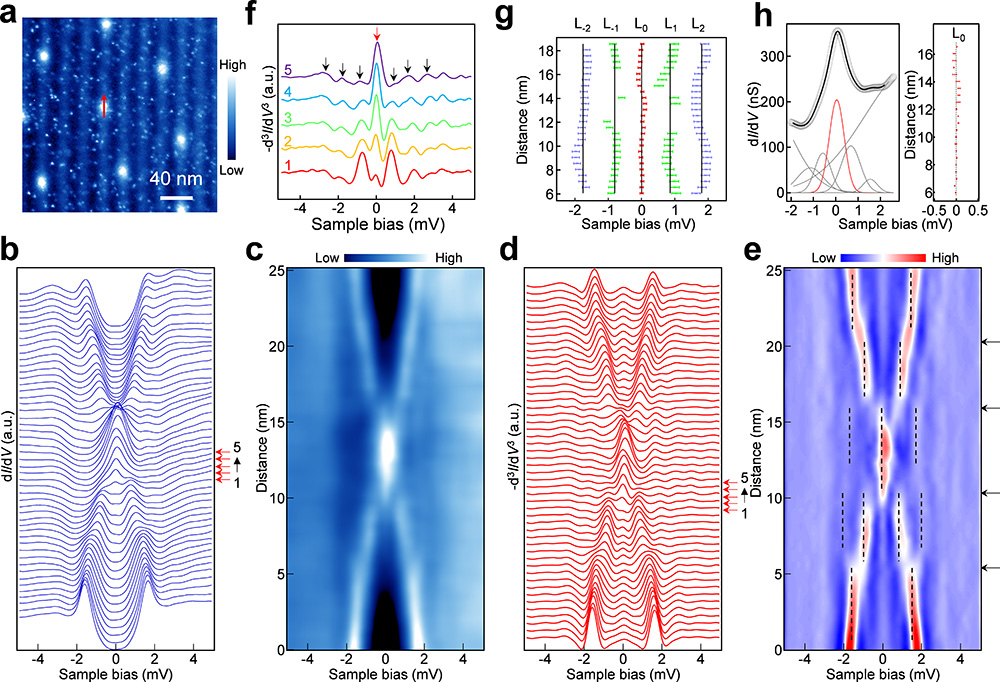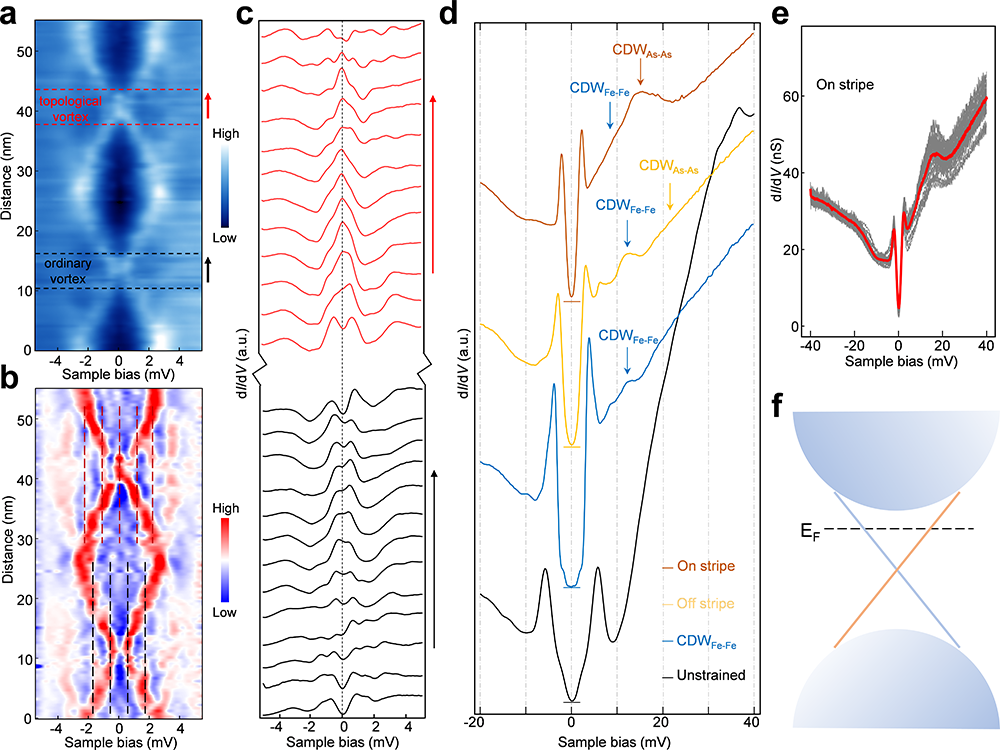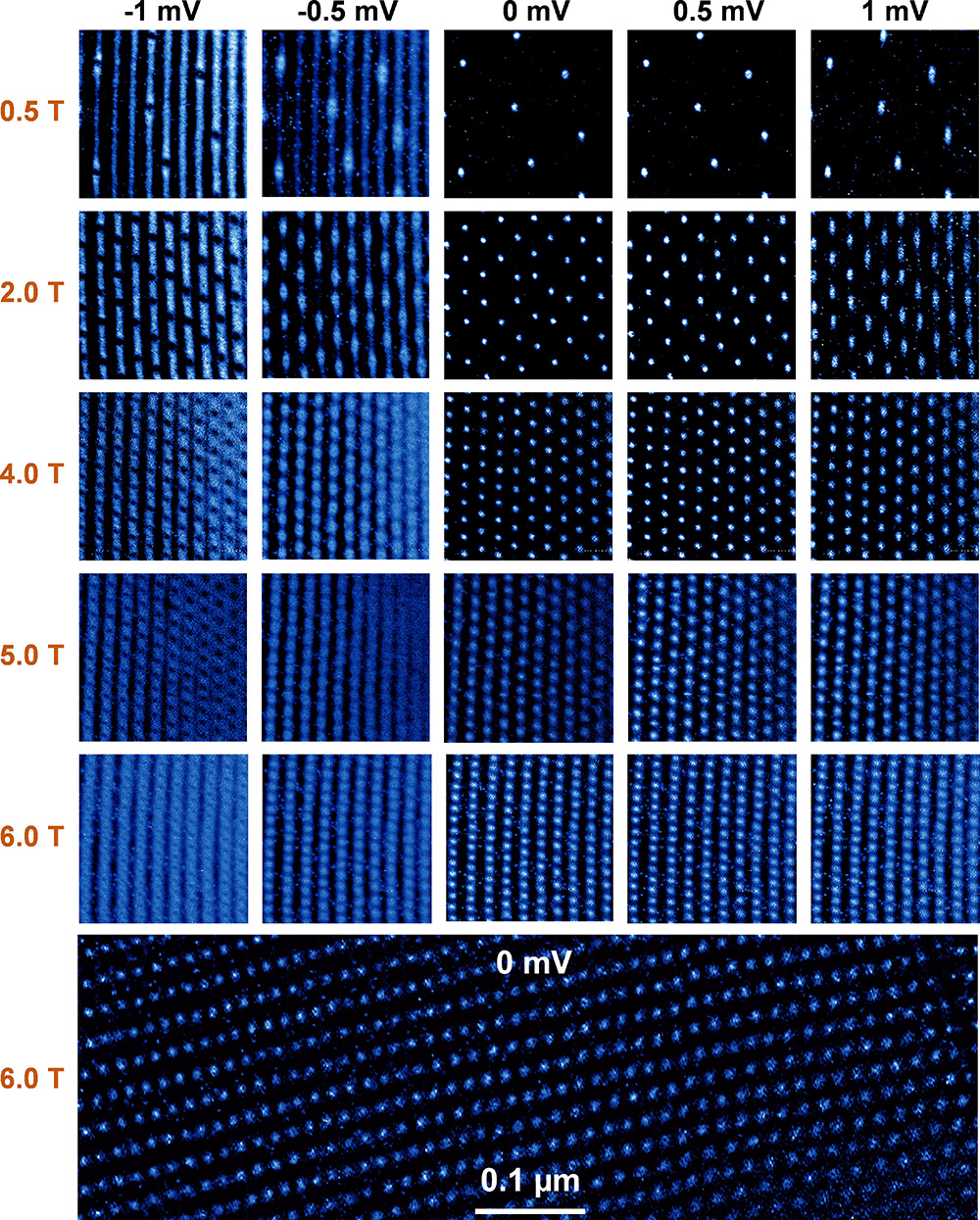Scientists Observe Large-scale, Ordered and Tunable Majorana-zero-mode Lattice
Date:09-06-2022 Print
In a study published in Nature on June 8, a joint research team led by Prof. GAO Hongjun from the Institute of Physics of the Chinese Academy of Sciences (CAS) has reported observation of a large-scale, ordered and tunable Majorana-zero-mode (MZM) lattice in the iron-based superconductor LiFeAs, providing a new pathway towards future topological quantum computation.
MZMs are zero-energy bound states confined inthe topological defects of crystals, such as line defects and magnetic field-induced vortices. They are characterized by scanning tunnelling microscopy/spectroscopy (STM/S) as zero-bias conductance peaks. They obey non-Abelian statistics and are considered building blocks for future topological quantum computation.
MZMs have been observed in several topologically nontrivial iron-based superconductors, such as Fe (Te0.55Se0.45), (Li0.84Fe0.16)OHFeSe, and CaKFe4As4. However, these materials suffer from issues with alloying-induced disorder, uncontrollable and disordered vortex lattices, and the low yield of topological vortices, all of which hinder their further study and application.
In this study, the researchers observed the formation of an ordered and tunable MZM lattice in the naturally strained superconductor LiFeAs. Using STM/S equipped with magnetic fields, the researchers found that local strain naturally exists in LiFeAs. Biaxial charge density wave (CDW) stripes along the Fe-Fe and As-As directions are produced by the strain, with wavevectors of λ1~2.7 nm and λ2~24.3 nm. The CDW with wavevector λ2 shows strong modulation on the superconductivity of LiFeAs.
Under a magnetic field perpendicular to the sample surface, the vortices emerge and are forced to align exclusively along the As-As CDW stripes, forming an ordered lattice. The reduced crystal symmetry leads to a drastic change in the topological band structures at the Fermi level, thus transforming the vortices into topological ones hosting MZMs and forming an ordered MZM lattice. The MZM lattice density and geometry are tunable by an external magnetic field. The MZMs start to couple with each other under high magnetic fields.
This observation of a large-scale, ordered and tunable MZM lattice in LiFeAs enriches the MZM family found in iron-based superconductors, thus providing a promising platform for manipulating and braiding MZMs in the future, according to the researchers.
These findings may shed light on the study of topological quantum computation using iron-based superconductors.
This study was supported by the National Science Foundation of China, the Ministry of Science and Technology of China, and CAS.
https://www.nature.com/articles/s41586-022-04744-8

Fig. 1 Characterization of biaxial CDW region. (Image by Institute of Physics)

Fig. 2 MZM in vortices. (Image by Institute of Physics)

Fig. 3 Majorana mechanism in LiFeAs. (Image by Institute of Physics)

Fig. 4 Tuning the MZM lattice with magnetic field. (Image by Institute of Physics)
Contact:
Institute of Physics
GAO Hong-Jun
Email: hjgao@iphy.ac.cn
Key words:
Majorana-zero-mode lattice; large scale; ordered; tunable; strain; LiFeAs.
Abstract:
Majorana zero modes (MZMs) obey non-Abelian statistics and are considered building blocks for constructing topological qubits. Iron-based superconductors with topological band structures have emerged as promising hosting materials, since isolated candidate MZMs in the quantum limit have been observed inside the topological vortex cores. However, these materials suffer from issues related to alloying-induced disorder, uncontrolled vortex lattices and a low yield of topological vortices. Here, we report the formation of an ordered and tunable MZM lattice in naturally-strained stoichiometric LiFeAs by scanning tunneling microscopy/spectroscopy (STM/S). We observe biaxial charge density wave (CDW) stripes along the Fe-Fe and As-As directions in the strained regions. The vortices are pinned on the CDW stripes in the As-As direction and form an ordered lattice. We detect more than 90 percent of the vortices to be topological and possess the characteristics of isolated MZMs at the vortex center, forming an ordered MZM lattice with the density and the geometry tunable by an external magnetic field. Remarkably, with decreasing the spacing of neighboring vortices, the MZMs start to couple with each other. Our findings provide a new pathway towards tunable and ordered MZM lattices as a platform for future topological quantum computation.


